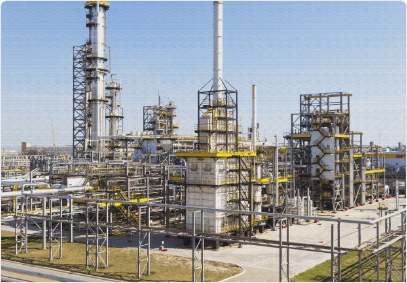Roar Solutions for Dummies
Roar Solutions for Dummies
Blog Article
What Does Roar Solutions Do?
Table of ContentsRoar Solutions Fundamentals ExplainedThe Best Strategy To Use For Roar SolutionsThe Main Principles Of Roar Solutions
In order to safeguard installments from a prospective explosion a method of evaluating and classifying a possibly harmful location is required. The purpose of this is to ensure the correct option and installment of equipment to inevitably stop an explosion and to make sure safety of life.
(https://padlet.com/thomascarrillo4740/roar-training-solutions-jrrziydpbb7m3xsa)
No tools should be installed where the surface temperature of the devices is above the ignition temperature level of the offered danger. Below are some usual dirt unsafe and their minimal ignition temperature level. Coal Dirt 380C 225C Polythene 420C (thaws) Methyl Cellulose 420C 320C Starch 460C 435C Flour 490C 340C Sugar 490C 460C Grain Dirt 510C 300C Phenolic Material 530C > 450C Aluminium 590C > 450C PVC 700C > 450C Soot 810C 570C The probability of the danger being existing in a concentration high sufficient to trigger an ignition will vary from location to location.
Dangerous area electrical equipment maybe made for usage in greater ambient temperature levels. Field Repair Work By Authorised Worker: Complex testing might not be needed nevertheless particular procedures may require to be adhered to in order for the tools to keep its third party rating. Each item of devices with a harmful score ought to be assessed separately.
The Single Strategy To Use For Roar Solutions
The equipment register is a comprehensive data source of devices documents that includes a minimum collection of fields to recognize each item's area, technical criteria, Ex lover category, age, and environmental information. This information is crucial for monitoring and managing the equipment successfully within unsafe locations. In contrast, for periodic or RBI tasting evaluations, the quality will be a combination of Detailed and Close assessments. The proportion of Comprehensive to Shut inspections will certainly be determined by the Devices Threat, which is evaluated based upon ignition threat (the possibility of a resource of ignition versus the chance of a flammable environment )and the unsafe area category
( Area 0, 1, or 2). This variant will likewise affect the resourcing requirements for job preparation. Once Great deals are specified, you can create tasting strategies based on the sample size of each Lot, which refers to the number of random devices things to be inspected. To identify the needed example size, 2 aspects need to be evaluated: the dimension of the Whole lot and the group of examination, which suggests the degree of initiative that ought to be used( decreased, regular, or enhanced )to the examination of the Great deal. By incorporating the group of evaluation with the Whole lot size, you can then develop the proper being rejected criteria for an example, indicating the allowed number of damaged products located within that example. For even more details on this process, please describe the Energy Institute Guidelines. The IEC 60079 conventional suggests that the maximum period in between evaluations must not go beyond 3 years. EEHA assessments will certainly also be carried out beyond RBI projects as component of set up upkeep and tools overhauls or repair services. These inspections can be credited towards the RBI sample dimensions within the impacted Great deals. EEHA evaluations are conducted to recognize mistakes in electrical equipment. A heavy racking up system is vital, as a single tool might have several mistakes, each with varying levels of ignition threat. If the consolidated rating of both assessments is less than two times the mistake rating, the Great deal is regarded appropriate. If the Lot is still thought about inappropriate, it needs to undertake a complete assessment or validation, which might set off more stringent inspection procedures. Accepted Lot: The reasons of any mistakes are determined. If a common failing setting is found, added devices might require examination and fixing. Faults are identified by extent( Security, Integrity, House cleaning ), ensuring that immediate problems are examined and attended to quickly to alleviate any effect on safety or operations. The EEHA database ought to track and record the lifecycle of mistakes along with the corrective actions taken. Carrying out a durable Risk-Based Examination( RBI )technique is vital for ensuring compliance and security in taking care of Electric Tools in Hazardous Locations( EEHA) (electrical refresher course). Automated Fault Rating and Lifecycle Administration: Easily handle mistakes and track their lifecycle to improve assessment accuracy. The introduction of this assistance for risk-based examination additionally strengthens Inspectivity's position as a best-in-class solution for governing conformity, along with for any kind of asset-centric examination usage situation. If you want finding out a lot more, we welcome you to request a demonstration and discover how our solution can change your EEHA monitoring procedures.
An Unbiased View of Roar Solutions

In terms of eruptive danger, a dangerous area is a setting in which an explosive atmosphere is existing (or may be anticipated to be present) in quantities that call for special safety measures for the construction, installment and use of tools. eeha certificate. In this article we check out the challenges encountered in the work environment, the threat control actions, and the required expertises to work securely
It is an effect of contemporary life that we make, keep or take care of a variety of gases or fluids that are deemed combustible, and a range of dusts that are regarded combustible. These compounds can, in particular conditions, create explosive environments and these can have significant and heartbreaking consequences. The majority of us are familiar with the fire triangle eliminate any one of the 3 elements and the fire can not happen, yet what does this mean in the context of dangerous locations? When damaging this down right into its simplest terms it is essentially: a mix of a certain amount of release or leakage of helpful resources a certain substance or material, combining with ambient oxygen, and the visibility of a source of ignition.
In the majority of instances, we can do little about the levels of oxygen in the air, but we can have significant influence on sources of ignition, for example electrical devices. Harmful areas are recorded on the hazardous location category illustration and are recognized on-site by the triangular "EX-SPOUSE" indicator. Below, among various other vital details, areas are divided into three types depending on the risk, the possibility and duration that an explosive atmosphere will exist; Area 0 or 20 is regarded one of the most unsafe and Area 2 or 22 is considered the least.
Report this page